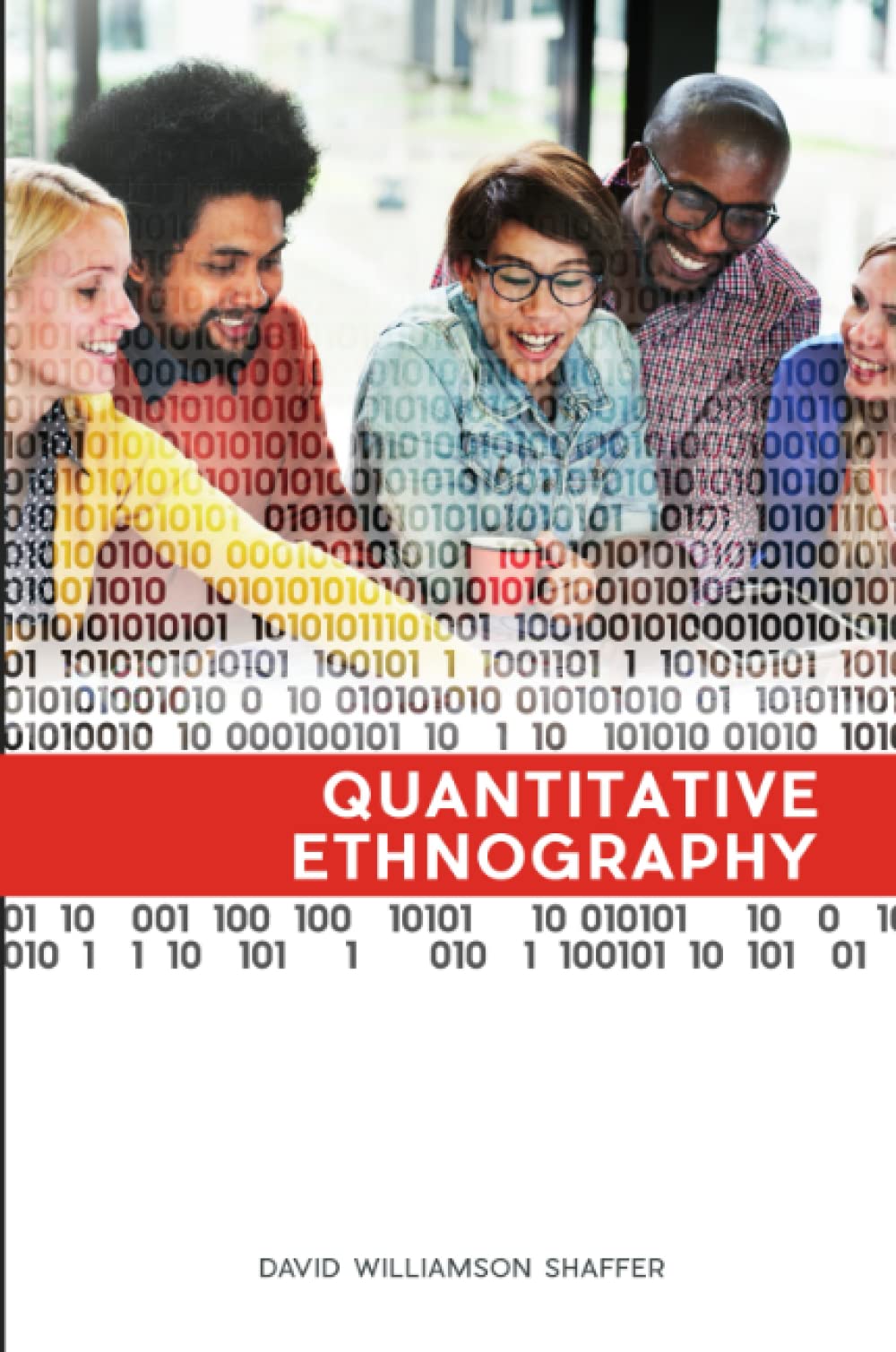معلومات عنا
دعم العملاء
احصل على التطبيق

قم بتوجيه الكاميرا لتنزيل التطبيق
حقوق الطبع والنشر © 2024 Desertcart Holdings Limited



Full description not available
L**T
An Engaging and Accessible Methods Text
What on earth could be signified by the term “quantitative ethnography?” I attended a talk by David Williamson Shaffer in spring 2017 in order to find out, and wound up reading his book and revising my dissertation's data analysis plan a result.In brief, Quantitative Ethnography describes powerful statistical tools for checking the reliability of qualitative data analyses. It's a primer, written for those “approaching the subject for the first time” (p. 23), and from the outset, it's clear we're in the hands of a skillful teacher. Concepts are carefully unpacked; metaphors are returned to and developed over successive sections; and each chapter ends with a set of fieldwork exercises. Throughout, Shaffer balances accessibility and authority, charm and rigor.The opening chapters supply a useful introduction to (or review of) major questions and methods of qualitative and quantitative research, while chapters in the middle of the volume introduce key quantitative ethnographic concepts. To conduct quantitative analyses of ethnographic data, Shaffer explains, we have to organize messy observations of human behavior into systematic data sets. The book supplies a framework for doing so, using a sustained example to introduce the concepts of “lines,” “conversations,” and “stanzas” in discourse. In the final four chapters, the contours of a science of quantitative ethnography emerge. Here is the crux: that we can use statistical methods to warrant claims of theoretical saturation in our interpretations of qualitative data.In an age of proliferating information, social science researchers must separate signal from noise. If we merely identify patterns without understanding meaning, Shaffer explains, we run the risk of GIGO: garbage in, garbage out. Quantitative ethnography supplies one way to “make better charts” of cultural meaning and behavior “by finding landmarks amidst the mountains of data” (p. 19). Despite the methods’ technical complexity, this volume may equip novice and experienced researchers alike with powerful analytic tools, and would be a worthy addition to a qualitative, quantitative, or mixed methods research course.
A**E
Succinct and Helpful Guide for Researchers and Teachers
I don’t remember the last time that I read a book about research methodology that I enjoyed this much! Shaffer provides a unique yet accessible text that gives an overview of how to think about big data in the context of qualitative research. This book is a great introductory text for new researchers but also provides insights for all sorts of expertises.As a university lecturer, I am always searching for textbooks that can support deep thinking and reflection. This versatile text includes end of chapter practice and reflection questions that can guide individual reflection or serve as prompts for classroom discussions. Throughout the book, Shaffer provides readers the tools they need to integrate learning sciences, ethnographic research, and big data by providing compelling and clear examples to illustrate his points. The examples were clear, purposeful and often funny.After reading the text, I decided to incorporate examples from Shaffer’s book in an undergraduate educational psychology lecture. After class that day, one student spoke with me and wanted to tell me how easy it was for her to understand the material even though she hasn’t taken any math courses yet. She said that the descriptions of statistics, including sampling, correlations, and relationship mining, really made sense to her and taught her about mathematical relationships in a way that did not engage her math anxiety.I recommend this text for learners and researchers of all skill sets and domains as it is an accessible guide to thinking about learning in the age of big data.
A**E
Incredibly useful methods book that is also fun to read
As a senior PhD student focused on research methods, this book is a particular joy. Shaffer's work is not just accessible, it is enjoyable to read (something rare in methods books). Further, it is applicable to most, if not all, fields of study (I am a human factors engineer, and have already applied some of these analysis techniques to my data; my colleagues who are health services researchers have begun exploring it as well).The first chapters provide an excellent background and introduction to those who are less familiar with qualitative research traditions. The latter sections that introduce statistical methods are not intimidating in the least (excellent for qualitative researchers looking to move to another level of analysis, or those of us who have not used statistics in a bit), but manage to maintain rigor at the same time. All in all, an impressive resource text that contains an amazing amount of substance while maintaining readability.I have already recommended and shared this book with scientists I work with as well as junior graduate students in my lab. I fully intent to use it as I progress through my career, applying the concepts and methods presented here in my own research and using it in my teaching (my future students will be required to read this book - the highest compliment I can pay).
Z**I
A Great Book with Useful Techniques for a Variety of Researchers
As a student of David Williamson Shaffer’s, it is awesome to see years of work come together in such a groundbreaking, lucid, and engaging book. Quantitative Ethnography shows how we can use quantitative and qualitative methods in concert to make meaningful interpretations of data.This book is a great introduction to both qualitative and quantitative methods for new researchers, providing clear explanations, thorough examples, and exercises that will help them work through their own research questions and data. Quantitative Ethnography will also benefit any researcher seeking to apply ethnographic, statistical, or learning analytic techniques (to name only a few) to their own work. More generally, it is a thought-provoking and enjoyable read for anyone interested in how we might humanize Big Data, and thereby use it to ask better questions and find more meaningful answers
ترست بايلوت
منذ شهرين
منذ أسبوعين